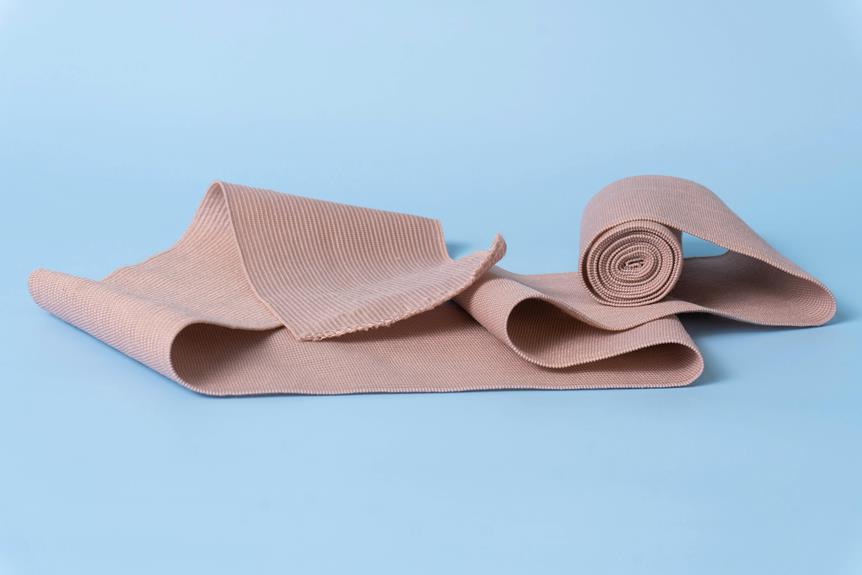
When tackling lymphedema, the key lies in finding the most effective compression garments. Different areas of the body may require specific types of compression wear to alleviate symptoms. Understanding which garments work best for targeted relief can significantly impact your management of lymphedema. By exploring the nuances of various compression options designed for arms, hands, legs, or full-body coverage, you can optimize your treatment plan. The right choice in compression garments could make a substantial difference in your comfort and symptom control, so it's essential to delve deeper into this topic.
Benefits of Compression Garments
When managing lymphedema, wearing compression garments can significantly reduce swelling and improve circulation. These garments work by applying gentle pressure to the affected area, helping to prevent the buildup of lymph fluid and promoting better lymphatic flow. By wearing compression garments consistently, you can experience reduced swelling, increased comfort, and improved overall function of the affected limb.
One of the key benefits of compression garments is their ability to provide support to the tissues and muscles in the affected area. This support can help alleviate discomfort and promote better mobility, allowing you to engage in daily activities with greater ease. Additionally, compression garments can aid in preventing complications associated with lymphedema, such as infections and skin changes.
Types of Compression Garments
To understand the variety of options available, explore different types of compression garments that cater to specific needs and preferences. Compression garments come in various styles to suit your individual requirements.
Compression sleeves are ideal for targeting lymphedema in the arms, providing consistent pressure to reduce swelling.
Compression gloves or gauntlets are designed to address lymphedema in the hands and fingers, promoting circulation and reducing discomfort.
For lymphedema in the legs, compression stockings offer support and compression to manage swelling effectively.
Compression wraps are versatile options that can be adjusted to different body parts, providing customizable compression for targeted relief.
Additionally, there are full-body compression garments that cover larger areas for comprehensive lymphedema management.
Understanding the different types of compression garments allows you to select the most suitable option based on your specific needs and comfort preferences. Experimenting with various types can help you find the best fit for effective lymphedema relief.
Choosing the Right Compression Level
Consider the optimal compression level that suits your specific needs and provides effective relief for lymphedema. When choosing the right compression level, it's crucial to consult with a healthcare professional who can assess your condition and recommend the appropriate level of compression. Compression garments come in various levels, typically ranging from mild (15-20 mmHg) to moderate (20-30 mmHg) and high (30-40 mmHg).
The level of compression needed depends on the severity of your lymphedema and your comfort level. For mild cases or for preventative measures, mild compression garments may be suitable. Moderate compression levels are often recommended for managing moderate lymphedema symptoms. High compression levels are usually reserved for severe cases where significant swelling reduction is required.
It's important to ensure that the compression level is adequate to provide the necessary support without being too tight or uncomfortable. Finding the right balance will help you effectively manage lymphedema symptoms and improve your overall comfort.
Tips for Using Compression Garments
To maximize the benefits of compression garments for lymphedema relief, ensure proper fit and consistent wear according to your healthcare provider's instructions. Proper fit is crucial for compression garments to effectively manage lymphedema. Ensure that the garments aren't too tight or too loose, as this can hinder their effectiveness. Follow your healthcare provider's guidance on how long to wear the garments each day and when to replace them. Consistent wear is key – make it a part of your daily routine to wear your compression garments as recommended.
When putting on compression garments, take your time to smooth out any wrinkles and ensure they're evenly positioned on your body. This helps maintain consistent compression levels. If you experience any skin irritation or discomfort while wearing the garments, speak to your healthcare provider immediately.
It's essential to keep your compression garments clean by following the care instructions provided. Regular washing helps maintain their elasticity and effectiveness in managing lymphedema. Remember, consistency and proper care are vital for getting the most out of your compression garments in relieving lymphedema symptoms.




